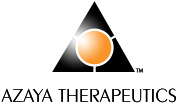FDA Approves Azaya Therapeutics Investigational New Drug Application
 Azaya Therapeutics, Inc. announced today that the Food and Drug Administration (FDA) has approved its Investigational New Drug (IND) application for its lead product "ATI-1123," a novel and improved formulation of Taxotere® (docetaxel), a leading chemotherapy drug with worldwide annual sales of over $2.8 billion.
Azaya Therapeutics, Inc. announced today that the Food and Drug Administration (FDA) has approved its Investigational New Drug (IND) application for its lead product "ATI-1123," a novel and improved formulation of Taxotere® (docetaxel), a leading chemotherapy drug with worldwide annual sales of over $2.8 billion.Azaya’s Phase I clinical study will now open for enrollment at two premier cancer research centers in Texas: South Texas Accelerated Research Therapeutics at the START Center for Cancer Care in San Antonio and The Mary Crowley Cancer Research Center in Dallas. Patients with solid tumors that have not responded to treatment with other anti-cancer agents will be enrolled in the study. The study is designed as an open-label, dose-escalation study that will determine the safety, tolerability and pharmacokinetics of the drug. The study also provides for the collection of efficacy data.
"The FDA’s acceptance of our IND package is an important milestone in the commercialization of this important and innovative new cancer treatment," said Michael T. Dwyer, president and CEO of Azaya. "Developing a cancer treatment such as ours takes an extraordinary amount of time and effort, and I am pleased to initiate our Phase I trial for patient enrollment," he added.
Azaya utilizes a proprietary manufacturing process to produce liposome-encapsulated chemotherapeutics that eliminates the use of toxic carriers and incorporates a naturally occurring protein to stabilize the liposomal encapsulated drug. Preclinical studies have demonstrated improvement in the toxicology profile and an enhanced efficacy of ATI-1123 compared to Taxotere® in a number of tumor models.
Azaya Therapeutics is a San Antonio-based emerging pharmaceutical company whose innovative technology platform makes safer and more effective cancer treatments. Its unique and proprietary Protein Stabilized Nanoparticle (PSN™) platform addresses the significant problems associated with delivery of water insoluble drugs. Azaya has leveraged this platform to develop differentiated drug products for the global oncology market. The company’s management is highly experienced in biotechnology and oncology and has a track record of obtaining FDA drug approvals and successfully building companies.
read more» Read more...












.jpg)

.jpg)



